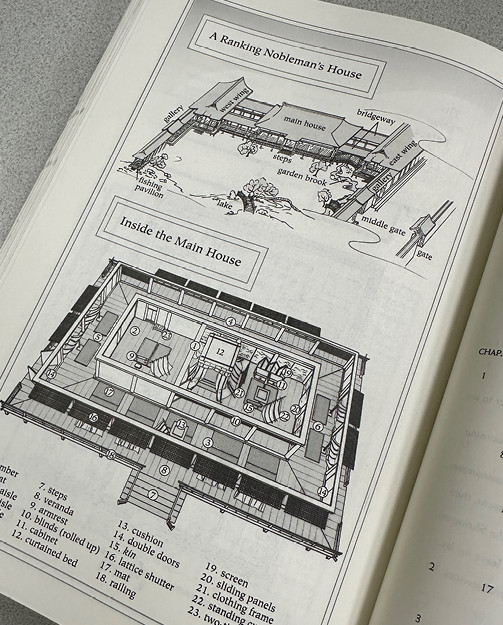Did you know that the world’s first novel is considered to be The Tale of Genji, written by Murasaki Shikibu (a woman)? It was written in the 11th century and covers the lifetime of Prince Genji and then his descendants, which is a period of some 70 years. The story is set at the height of the Heian period during the reign of Emperor Daigo, 897-930 CE.

Murasaki Shikibu composed The Tale of Genji while a lady in attendance at the Japanese court, likely completing it about 1010. Because Chinese was the court’s scholarly language, works written in Japanese (the literary language used by women, often in personal accounts of life at court) were not taken very seriously; so too, prose was not considered the equal of poetry. The Tale of Genji, however, differed in being informed by a comprehensive knowledge of Chinese and Japanese poetry and in being a graceful work of imaginative fiction. It incorporates some 800 “waka”, courtly poems purported to be the writing of the main character.

The book has been printed in numerous versions over the centuries. The original manuscript no longer exists, but there have been many reproductions, translations, and adaptations since then. A scholar named Kikan Ikeda conducted a study and found there were roughly 100 manuscript copies made before the end of the Muromachi period in the mid-16th century.
In modern times, there have been several notable English translations, starting with Andrew Waley’s version in the early 20th century. Each translator brings their own interpretation to the text, which can result in significant differences between versions.
The most recent version was translated by Royall Tyler, published by Penguin Books and printed by Friesens Corporation. Supplemented with detailed notes, glossaries, character lists, and a chronology to help readers navigate the multigenerational narrative, this edition presents the story in the style it deserves.





